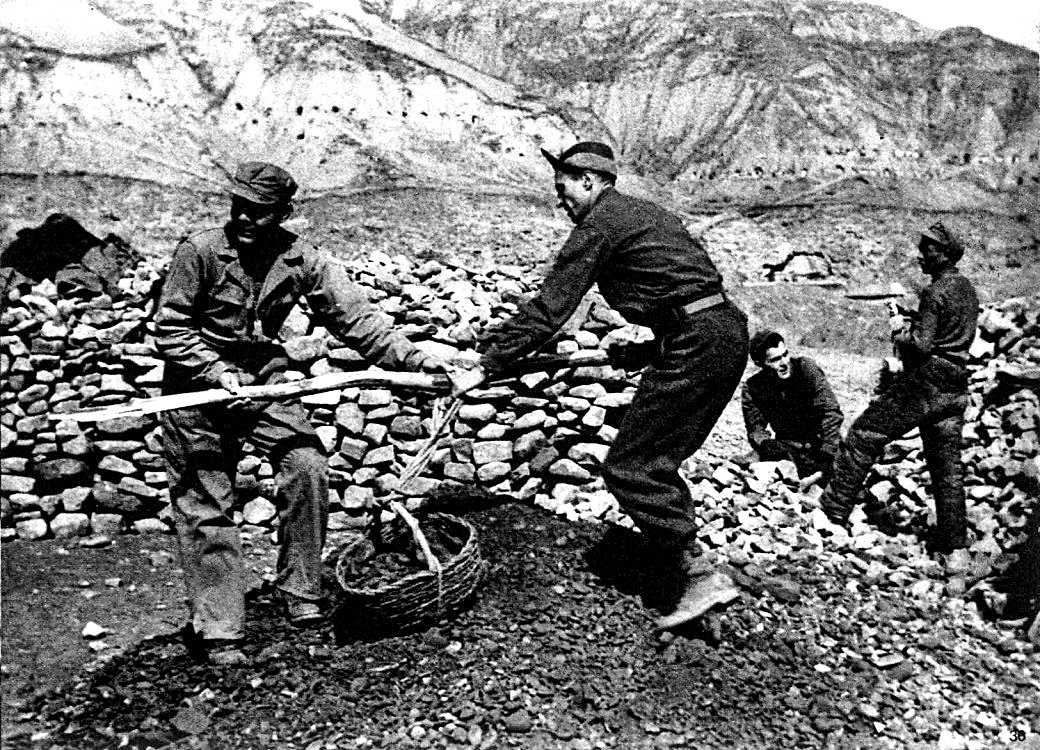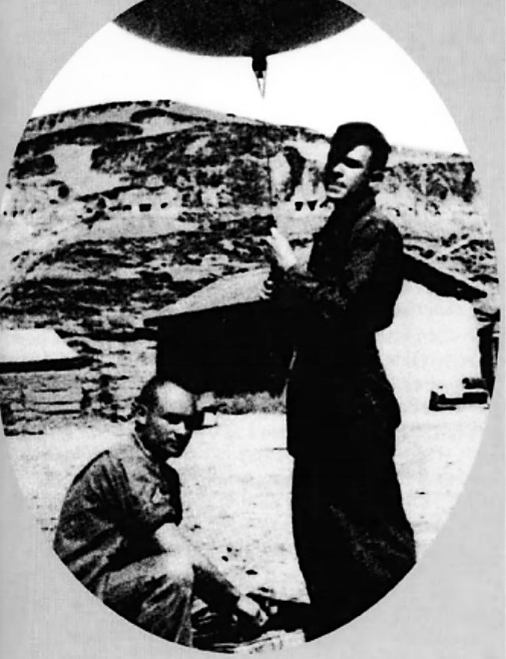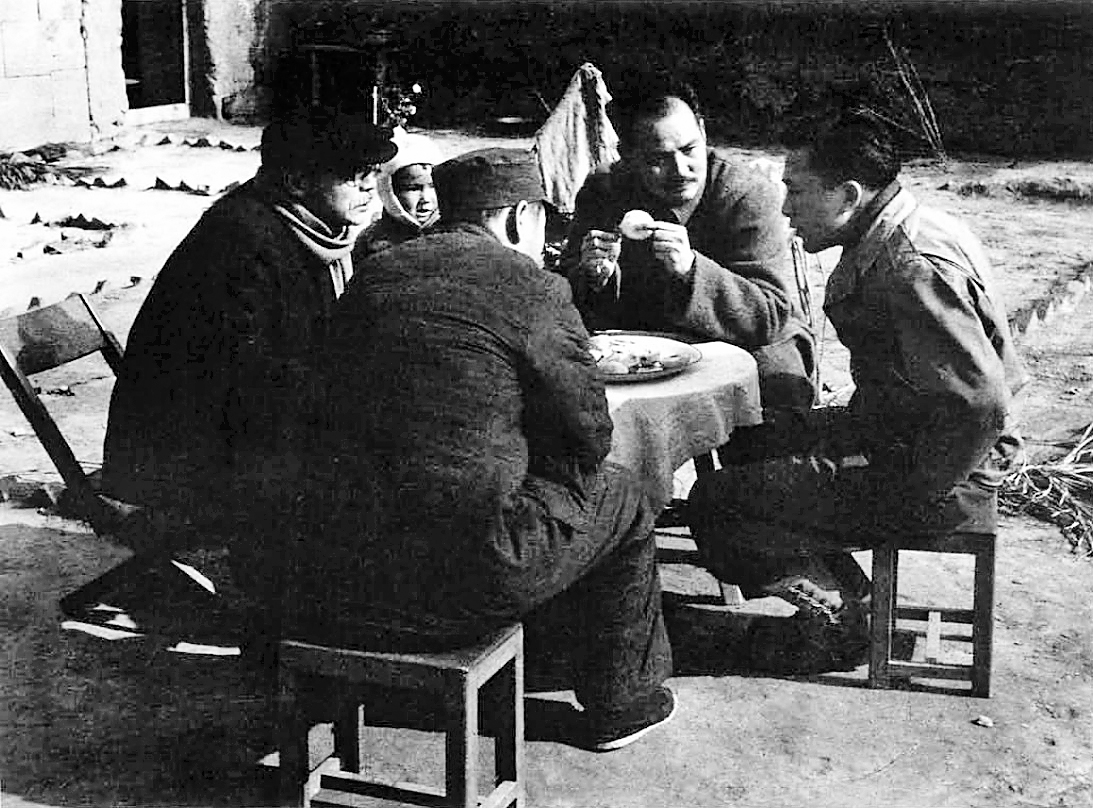In 1945, Communist, US forces worked together to establish meteorological assets

While China's meteorology is dominated by the use of satellites and computer modeling today, its modern origins can be traced back to a cave at the foot of Qingliang Mountain in Yan'an, Shaanxi province, in March 1945.
In the cave, a group of young Chinese learned about modern meteorology and the use of wireless communication devices with meteorologists from the United States Army Observation Group, or as its members called it, the Dixie Mission.
Using their knees as desks, stones as stools, and mixing soot with water to take notes, the trainees formed a meteorological training team, marking the beginning of meteorological undertakings led by the Communist Party of China. Six of the 21 trainees established the Party's first batch of six weather stations. Later that year, the Party's first weather observatory was put into service.
READ MORE: Flying Tigers exhibition in San Francisco honors US-China wartime friendship
In the final years of the Chinese People's War of Resistance Against Japanese Aggression (1931-45), while bombs thundered across the skies of the Pacific and Europe burned with the fire of resistance, a quieter collaboration was taking shape in the loess hills of northwestern China.
By 1944, the tide of war had turned as Allied forces were gaining ground and the Chinese battlefield had grown crucial to the Pacific theater. US bombers based in Chengdu in Sichuan province, Kunming in Yunnan province, and Hengyang in Hunan province, were launching raids deep into Japanese-held territory and over the Japanese mainland.
Commenting on the situation 80 years ago, Yang Zengjun, an official from today's Yan'an Meteorological Bureau, said that as US aircraft often needed to land in northern China due to fuel limits, accurate meteorological data from areas controlled by the CPC became vital.
That summer, the US Army Observation Group arrived in Yan'an to discuss the possibility of establishing weather observation stations across the region. They also proposed establishing weather stations in Communist-controlled areas and deploying US personnel to collect data, which raised concerns over national sovereignty, Yang said.
Wang Zheng, then director of the Third Bureau of the Central Military Commission, refused their request. "We would rather forgo any equipment than compromise our national sovereignty. If you are sincere, offer guidance in teaching. Our weather stations will be built by our own graduates," Wang said at the time.

The two sides made an agreement that the US would supply equipment and training, while the Chinese would staff and run the stations. The Qingliang Mountain Meteorological Training Team was then formed and had instructors, including US military meteorologists and Zhang Naizhao, a Tsinghua University meteorology graduate who also played the role of interpreter.
During the three-month training course, the trainees studied atmospheric science, observation techniques and wireless communication. There were no desks, electricity or proper paper. Classes often took place outdoors when the weather allowed.
The lecture notes were scrawled on the backs of old books or reused pamphlets. Evenings were dimly lit by makeshift lamps fashioned from used ink bottles, according to the introduction at the exhibition center of meteorological development in Yan'an.
In May 1945, during the graduation ceremony of the first class, Ye Jianying, chief of staff of the Central Military Commission, who would become a marshal in 1955, addressed the new meteorologists. "You are the first generation of meteorological workers in our Party and our army. Your work marks the birth of our meteorological endeavor," Ye said.
Soon after, six weather stations were established by the graduates in the CPC-led Shaanxi-Gansu-Ningxia area and revolutionary base areas in Shanxi, Hebei, Shandong and Henan provinces. They carried their instruments, along with portable radio sets, on muleback through forests and over mountains, setting up stations that would prove critical to both combat and flight operations.
Ge Shimin, one of the 21 trainees, was dispatched to Chi'an village, Shexian county, a Communist-led base area in today's Hebei province.
"I conducted observations twice a day, morning and evening, recording temperature, air pressure, and identifying cloud types with my eyes. I also visually estimated cloud height and visibility range. After compiling the data into a telegram, I sent the consolidated weather information to the Dixie Mission in Yan'an," Ge recalled in his book Days in Chi'an.
At that time, the US military was bombing Japanese military targets in occupied areas. Their planes were often shot down and crash-landed in CPC-led revolutionary areas. Surviving US pilots were escorted by locals or stationed troops of the CPC, sometimes using donkeys, to the regional military headquarters, according to Ge.
"When US pilots were brought in, I would send a message to Yan'an, and upon receiving a reply with timing instructions, I would go to the Changning airfield to meet the plane. I provided weather forecasts in advance and guided the landing," Ge wrote in the book.

According to a collection of the US Army Observation Group, compiled by the national archives administration, US Army Colonel David D. Barrett believed the Communists greatly helped the Dixie Mission.
"They collected weather forecasts for our navy and air force, which made crucial contributions. Thanks to the cooperation, many small radio stations and instruments for directing operations were sent to the remote parts of the areas under Communist control. An astonishing volume of useful weather reports came from those tiny radio posts," Barrett said.
In January 1945, Major General George E. Stratemeyer, a senior commander of the US Army Air Force, sent a message to CPC leader Zhu De to express his gratitude for the Party's provision of meteorological intelligence and their assistance to the US Army Air Force in meteorological operations.
"Colonel Ellsworth, inspector of the 10th weather region, recently returned from a visit to Yan'an and reported to me the excellent meteorological work carried out by the North China government and its significant contribution to our joint war effort," Stratemeyer said.
ALSO READ: Unit 731 atrocities a deep wound that can't be forgotten
Ellsworth believed that the meteorological school jointly built by the two sides and the graduates had greatly improved the efficiency of the US air force's meteorological operations, Stratemeyer added.
In September 1945, following Japan's surrender, the Chinese military took over the US meteorological station in Yan'an. A group of 11 people, led by Zhang Naizhao and staffed with graduates of the training program, established the CPC's first official weather observatory.
Barrett recalled that in September, after he left the mission, several well-known meteorological observers were sent to Yan'an to join this team. "These experts launched weather balloons every day, attaching them to radios so that they could automatically report weather conditions from the sky, which is a meteorological miracle," he said.
In March 1947, the weather observatory was moved from Yan'an along with the Central Military Commission, and was renamed the Meteorological Team of the Third Bureau of the Central Military Commission.
Contact the writer at zhaoyimeng@chinadaily.com.cn


